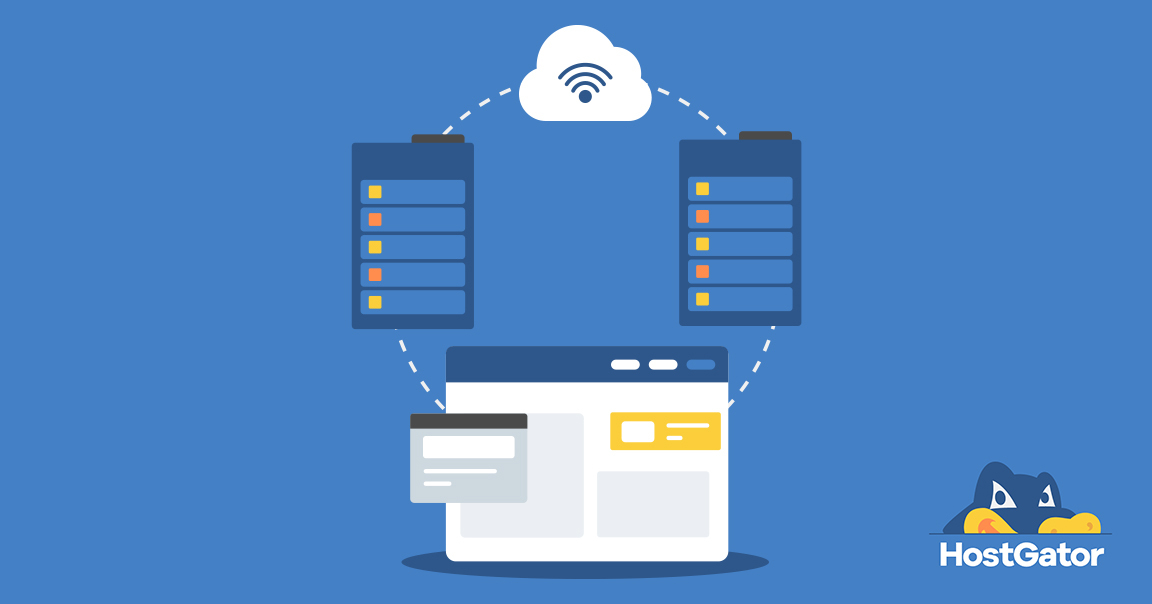Slow-loading pages not only frustrate visitors but also harm your search engine rankings. This is where high-performance cloud hosting comes in as a game-changing solution.
By leveraging cloud technology, businesses can dramatically improve their website speed, reliability and user experience. This guide explores how cloud hosting performance optimisation can change your business and help you stay ahead of competitors.
Cloud Hosting Fundamentals
The journey from traditional hosting to high-performance cloud hosting represents a major technological leap forward. Traditional hosting relied on single physical servers, making websites vulnerable to hardware failures and traffic spikes. When one server went down, entire websites could become inaccessible.
Cloud hosting performance changed everything by introducing distributed computing architecture. Instead of depending on a single server, websites now run on a network of connected virtual servers. This fundamental shift brings several key advantages:
- Dynamic Resource Allocation: Cloud hosting automatically adjusts computing resources based on real-time demand. When traffic spikes occur, additional resources are instantly deployed to maintain fast loading times.
- Geographic Distribution: Content can be served from data centres closest to visitors, significantly reducing latency. This website performance optimisation ensures quick access regardless of user location.
- Enhanced Reliability: With multiple redundant servers handling requests, cloud hosting virtually eliminates downtime. If one server fails, others seamlessly take over.
- Instant Scalability: Resources can be scaled up or down within minutes, allowing websites to handle any amount of traffic while maintaining optimal performance.
How to Increase Performance of Website With Cloud Hosting
The performance of your website is influenced by the user experience and the search rankings of your website. Cloud hosting offers powerful solutions to boost your site’s speed and reliability. Here is how to increase your site performance with cloud hosting:
1. Server Location and Infrastructure
-
Datacenter Location Selection
Datacenter location plays a crucial role in website performance. Choose servers geographically closer to your target audience to minimise latency. Using Content Delivery Networks (CDNs) alongside strategic datacenter placement can also ensure faster content delivery to users worldwide.
-
Web Server Options
Web server selection impacts how efficiently your site handles requests. NGINX offers superior performance for high-traffic sites, while LiteSpeed provides excellent caching capabilities and WordPress optimisation. Both options support modern website acceleration techniques.
-
Load Balancer Implementation
Implementing load balancers distributes traffic across multiple servers, preventing overload during peak times. This ensures consistent performance and helps maintain optimal response times even when visitor numbers surge.
2. Database and Protocol Optimisation
-
SQL Version Selection
Selecting the right SQL version is vital for database performance. Modern versions like MySQL 8.0 or MariaDB 10.6 offer improved query optimisation and better resource management, leading to faster data retrieval and processing.
-
HTTP Protocol Considerations
HTTP protocol choices affect loading speeds significantly. Implementing HTTP/2 or HTTP/3 enables multiplexing and header compression, reducing latency. In addition, enable HTTPS for security while maintaining fast connection speeds.
-
Resource allocation and scaling
Smart resource allocation ensures your website scales efficiently. Monitor CPU, RAM and storage usage to adjust resources dynamically. Cloud hosting allows flexible scaling to maintain high performance during traffic spikes.
3. Content Delivery and Security
-
CDN Integration
Content Delivery Networks (CDNs) are critical for high performance cloud hosting. By distributing website content across global servers, CDNs reduce latency and improve loading speeds. Cloud hosting performance significantly enhances when users access content from geographically closest server locations.
-
Security Considerations
Website security directly impacts performance. Implement robust firewall protections, SSL certificates and regular security audits. How to increase performance of website includes preventing malicious traffic that can slow down server resources and compromise site speed.
-
Redirect Management
Efficient redirect management prevents unnecessary server load. Minimise complex redirect chains, use 301 permanent redirects and regularly audit redirect configurations. This approach maintains cloud hosting performance by reducing processing time for page requests.
4. Essential Performance Optimisation Strategies
-
Image Optimisation Techniques
Implement effective image optimisation by using next-gen formats like WebP and proper compression. Resize images to match display dimensions and use lazy loading to improve page load times.
-
HTTP Request Reduction
Reduce HTTP requests by combining CSS/JavaScript files and using sprite sheets for images. Fewer requests mean faster page loads, especially important for mobile users with limited bandwidth.
-
Browser Caching Implementation
Enable browser caching to store static resources locally on visitors’ devices. Set appropriate cache headers and leverage cloud hosting’s built-in caching features for improved performance.
-
Code minification
Perform code minification on CSS and JavaScript files to reduce file sizes. Also, remove unnecessary characters and whitespace while combining files to decrease load times and improve website performance.
5. Monitoring and Maintenance
-
Website Audit Tools
Utilise comprehensive website audit tools like Google PageSpeed Insights, GTmetrix and WebPageTest. These platforms provide detailed insights into how to increase performance of website, offering actionable recommendations for speed optimisation.
-
Core Web Vitals Tracking
Core Web Vitals measure critical user experience metrics: loading speed, interactivity and visual stability. Regularly monitor these metrics to ensure your high-performance cloud hosting meets user expectations and search engine ranking criteria.
-
Performance Metrics Analysis
Continuously analyse performance metrics such as Time to First Byte (TTFB), page load time and server response time. Understanding these metrics helps identify bottlenecks in cloud hosting performance.
6. Regular Maintenance Tasks
-
Plugin and Theme Optimisation
Regularly audit and optimise WordPress plugins and themes. Remove unnecessary extensions, update to the latest versions and choose lightweight, performance-focused solutions to maintain high-performance cloud hosting.
-
Database Optimisation
Perform routine database maintenance: remove spam comments, optimise database tables and clean up post revisions. Remember, efficient database management is crucial for the performance of a website.
-
Server Resource Monitoring
Continuously monitor server resources like CPU usage, memory consumption and bandwidth. Proactive monitoring ensures your cloud hosting performance remains optimal, preventing potential slowdowns during traffic spikes.
Best Practices for Optimal Performance
-
Resource Scaling Strategies
Resource scaling is crucial for high-performance cloud hosting. Implement auto-scaling mechanisms that dynamically adjust server resources based on real-time traffic demands.
This approach ensures your website maintains optimal performance during unexpected traffic spikes, preventing downtime and slow loading times.
-
Backup and Redundancy Planning
Effective cloud hosting performance relies on robust backup and redundancy strategies. So, create multiple backup points across different geographic locations to protect against data loss.
How to increase the performance of the website includes implementing redundant server configurations that automatically switch if primary servers experience issues.
-
Performance Testing Procedures
Regular performance testing is essential for maintaining website efficiency. Utilise tools like Apache JMeter and LoadRunner to simulate various traffic scenarios. These tests help identify potential bottlenecks in your high-performance cloud hosting infrastructure before they impact user experience.
-
Client Service Considerations
Prioritise client-side performance by optimising user interactions. Implement responsive design, minimise client-side processing and provide clear loading indicators. Cloud hosting performance is not just about server speed but also about creating a smooth, responsive user experience.
Conclusion
Maximising website performance requires a holistic approach to cloud hosting. By implementing strategic resource management, robust security measures and continuous optimisation techniques, businesses can achieve high-performance cloud hosting that delivers exceptional user experiences.
Supercharge your online presence with HostGator’s high-performance cloud hosting! Take advantage of dynamic resource allocation, instant scalability, and cutting-edge security features. Ensure your website works at lightning speed and remains reliable, even during traffic surges. Partner with HostGator for the ultimate hosting solution!









